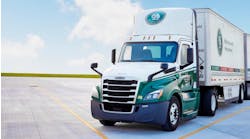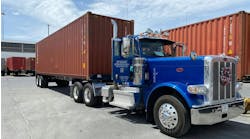There seems to be joy in Mudville again as some carriers begin to show improved profit margins. It's been a long time since carriers last indicated that their financial situations are beginning to improve. But let's not get too excited. We may be moving from life-support into intensive care, but we're certainly not ambulatory yet.
As with virtually every other sector of the economy, trucking has recently downsized through bankruptcies, mergers and outright shutdowns. While a shift in the profitability of freight has been slowly making its way into the system, it is not yet significant enough to make publicly traded carriers appealing as stock buys, with the exception of small-package and LTL operations.
Why not? We are still faced with rising fuel prices, increased taxes, roadside inspections, larger security compliance costs and, as hours-of-service rules go into effect, less efficiency in trucking.
Then there's the extra costs related to '02 emissions-compliant engines, not to mention those designed to meet the even stricter '07 regs. I know of only a handful of carriers that thought they could easily absorb the new engines into their fleets. Most were concerned about issues of reliability and increased fuel consumption.
If ever there were a time to know your costs, this is it. As an industry, we have seen equipment utilization peak — and it's not expected to climb back. It doesn't matter whether you're talking about the Class 8 market or Class 5-7. With 5 million or so of these puppies running around, it's hard to see the need to increase the breeding rate. Yet, we will. The result will be a continued pressure to lower rates, as well as little, if any, pressure to use intermodal.
So if you plan to survive, you need to be able to answer the following questions — and to get in the habit of repeating the exercise every six months or so. It's quite likely your answers will change.
First question: Within a carrier type (flatbed, dry van, refrigerated, tank, etc), am I optimizing the rate at which I replace equipment?
This assumes that you have set aside enough money to accomplish this. Doing this accurately means knowing how a specific change in operations will impact equipment utilization. And you'd also better know how rapidly the residual value of my equipment is changing.
Re-evaluating your fleet every six-months is critical to staying ahead of the curve. Allocating the full cost of the vehicle for direct costing, as well as indirect costing, will enable you to determine the degree to which non-driving time is eating into your profits.
Second question: Within my fleet, is the equipment allocation optimal?
In order to answer this, you need to understand the cost of operations for each fleet type (local, line-haul, contract, etc). We're often caught looking into the yard and wondering why all that equipment is there — or why it isn't there to be re-routed.
Unfortunately, most fleets use average revenue within a fleet type and average burden costs across fleet types. This is a sure way to sink the profit-generating segment and grow the cost hog.
Third question: Which of my accounts are profitable and which are not?
It's my experience that carriers are rarely able to quantify the extent to specific shipper is costing them money. Until that information can be quantified and addressed, however, it will be the cancer that finally kills.
These are the easy questions; answer them now. We'll take another look in six months.


